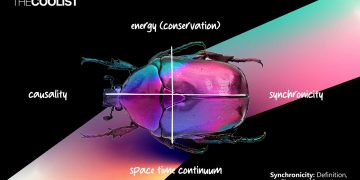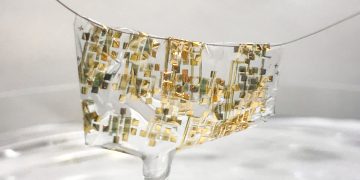Introduction: The Intersection of Healthcare and Sustainability
The healthcare industry is one of the largest and most resource-intensive sectors globally, with significant environmental impacts due to energy consumption, waste production, and resource usage. As climate change becomes an increasingly urgent global concern, there is growing pressure for industries, including healthcare, to adopt more sustainable practices that reduce their carbon footprint and improve their overall environmental impact.
In recent years, the concept of green technology has gained momentum, particularly in sectors that consume vast amounts of energy and materials, like healthcare. Green technology refers to innovative solutions that aim to minimize environmental harm while supporting economic and social development. In the context of healthcare, it encompasses everything from energy-efficient medical devices and eco-friendly hospital designs to sustainable waste management and green pharmaceuticals.
In this article, we will explore how green technology is transforming the healthcare industry and shaping a more sustainable future. By examining key innovations and practices, we will highlight how sustainability can coexist with medical progress, ultimately leading to a more eco-conscious and sustainable healthcare system.
The Environmental Impact of Healthcare
Before diving into the role of green technology, it’s essential to understand the environmental challenges the healthcare industry faces. The sector’s large-scale operations contribute to:
- Energy Consumption: Hospitals, medical clinics, and healthcare facilities consume vast amounts of energy for lighting, heating, cooling, medical equipment, and infrastructure. According to studies, healthcare buildings in the U.S. account for nearly 10% of the nation’s total energy consumption.
- Carbon Emissions: Healthcare contributes to greenhouse gas emissions through transportation (of staff, patients, and goods), energy usage in buildings, and the production of medical devices and pharmaceuticals.
- Waste Generation: Healthcare facilities generate large amounts of waste, including single-use plastics, medical waste (which can be hazardous), and paper. The disposal of such waste is often energy-intensive and can lead to significant environmental degradation.
- Water Consumption: Hospitals require significant amounts of water for cleaning, sterilization, and patient care, contributing to the depletion of local water resources in some areas.
These environmental impacts underscore the need for the healthcare industry to shift toward more sustainable practices—an area where green technologies can play a pivotal role.
Green Technology Innovations in Healthcare
Green technologies are becoming increasingly integrated into healthcare, providing solutions that not only reduce environmental harm but also improve operational efficiency, reduce costs, and enhance patient care. Below are some key areas where green technology is making a significant impact:
- Energy-Efficient Healthcare Buildings
Hospitals and healthcare facilities are among the most energy-intensive buildings. To mitigate energy consumption, there is a growing emphasis on sustainable building designs and energy-efficient technologies:
- Green Hospital Designs: The design of healthcare facilities is evolving to integrate environmentally friendly features, such as better insulation, energy-efficient windows, and the use of renewable energy sources like solar power and wind energy. Many new hospitals are being built to meet sustainability standards like LEED (Leadership in Energy and Environmental Design), which incorporates energy-saving measures, water conservation, and sustainable materials.
- Smart Building Technologies: The integration of Internet of Things (IoT) devices in healthcare buildings helps optimize energy use. Smart thermostats, motion sensors, and automated lighting systems ensure that energy is used only when needed. For example, automated systems can adjust lighting and climate control in rooms that are not in use, reducing the overall energy demand of the facility.
- Renewable Energy Sources: Many healthcare organizations are transitioning to renewable energy sources, including solar panels, geothermal energy, and wind power. Hospitals, particularly in rural areas, are installing on-site renewable energy systems to reduce reliance on the grid and minimize carbon emissions.
- Sustainable Medical Devices and Equipment
Another significant area of focus is making medical devices and equipment more sustainable. Medical devices consume vast amounts of energy and resources, and their production often involves materials that are harmful to the environment:
- Energy-Efficient Medical Equipment: Manufacturers are increasingly designing medical equipment, such as MRI machines, X-ray devices, and patient monitors, to be more energy-efficient. These innovations reduce the operational costs of healthcare facilities while also minimizing energy usage.
- Eco-Friendly Medical Packaging: The packaging of medical devices and pharmaceuticals has traditionally relied heavily on single-use plastics. However, many companies are now developing biodegradable, recyclable, or reusable packaging to reduce plastic waste in healthcare settings.
- Sustainable Manufacturing Practices: Some medical device companies are adopting more sustainable manufacturing practices by using recycled materials, reducing waste during production, and cutting down on the use of toxic chemicals.
- Green Pharmaceuticals and Healthcare Products
The pharmaceutical industry is another significant contributor to environmental pollution, particularly through the production of drugs and their packaging. There are several ways green technology is helping to make the pharmaceutical industry more sustainable:
- Green Chemistry: The principles of green chemistry focus on designing chemical processes that reduce the environmental impact of drug production. This includes using fewer toxic chemicals, reducing energy usage, and minimizing waste during drug manufacturing.
- Sustainable Drug Packaging: Pharmaceutical companies are increasingly adopting recyclable, biodegradable, or minimalistic packaging to reduce waste. Companies are also exploring ways to reuse drug packaging materials to ensure that packaging doesn’t end up in landfills.
- Eco-Friendly Pharmaceuticals: The rise of plant-based medicines and natural therapies offers an alternative to chemically-intensive pharmaceutical products. Additionally, some researchers are exploring how to create medications that break down naturally in the environment, reducing the risk of contamination through wastewater or landfills.
- Waste Management and Recycling in Healthcare
Given the amount of waste generated by healthcare facilities, efficient waste management systems are essential to reduce environmental harm:
- Recycling Programs: Many hospitals are now implementing comprehensive recycling programs to ensure that waste such as paper, plastic, and metal is properly sorted and recycled. Some are also exploring waste-to-energy technologies, where non-recyclable waste is converted into usable energy.
- Medical Waste Treatment: Innovative medical waste treatment technologies, such as autoclaving and microwave treatment, are helping reduce the environmental impact of hazardous waste disposal. These technologies ensure that medical waste is treated safely without the need for incineration, which can produce harmful emissions.
- Single-Use Plastics Reduction: There is also a significant push toward reducing single-use plastics in hospitals and medical settings. By switching to reusable items (such as reusable surgical instruments or durable gowns), healthcare facilities can cut down on the environmental impact of single-use plastics.
- Telemedicine and Digital Healthcare Solutions
Telemedicine is a rapidly growing trend in healthcare that can play an essential role in reducing the sector’s environmental footprint:
- Reduced Carbon Footprint: By allowing patients to consult healthcare professionals remotely via video calls, telemedicine reduces the need for travel, which is a major source of carbon emissions. This can lead to fewer cars on the road, reducing overall transportation-related pollution.
- Lower Resource Consumption: Digital healthcare platforms can also reduce the need for physical infrastructure and resources. Patients can access medical advice, prescriptions, and health monitoring from their homes, minimizing the need for physical appointments and visits to healthcare facilities.

Challenges in Implementing Green Technology in Healthcare
While green technology holds enormous potential to transform the healthcare industry, there are several challenges that need to be addressed:
- High Initial Costs: Implementing green technologies, such as energy-efficient medical equipment or sustainable building designs, often comes with high upfront costs. Many healthcare facilities, particularly in low-resource settings, may struggle to afford these technologies.
- Regulatory Hurdles: The healthcare sector is heavily regulated, which can slow the adoption of new technologies. Regulatory frameworks may need to evolve to accommodate green innovations in the medical field, ensuring that safety and effectiveness are maintained.
- Lack of Awareness and Training: There may be a lack of awareness and expertise among healthcare professionals regarding sustainable practices and technologies. For these technologies to be effective, healthcare workers must be adequately trained to use them.
- Infrastructure Limitations: In some regions, particularly in developing countries, healthcare infrastructure may not be equipped to support advanced green technologies. This includes limitations in renewable energy access, waste management systems, and access to high-quality medical devices.
Conclusion: A Sustainable Future for Healthcare
As the world continues to face environmental challenges, the healthcare sector must evolve to adopt more sustainable practices. Green technologies offer immense potential to reduce the environmental footprint of healthcare operations, from energy-efficient buildings and medical devices to sustainable drug production and waste management. By embracing these innovations, the healthcare industry can not only reduce its environmental impact but also improve operational efficiency, lower costs, and create a healthier future for all.
While challenges remain in implementing these technologies, the continued development of green solutions and the growing demand for sustainable practices will likely drive the healthcare industry toward a more sustainable future. Green technology, when fully integrated into the healthcare system, has the potential to create a healthier, more sustainable world for generations to come.
















































Discussion about this post